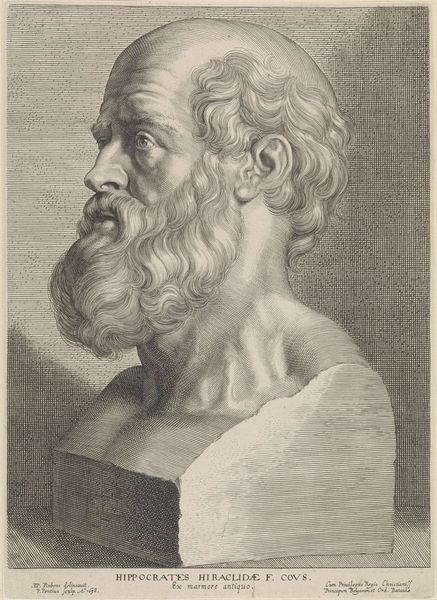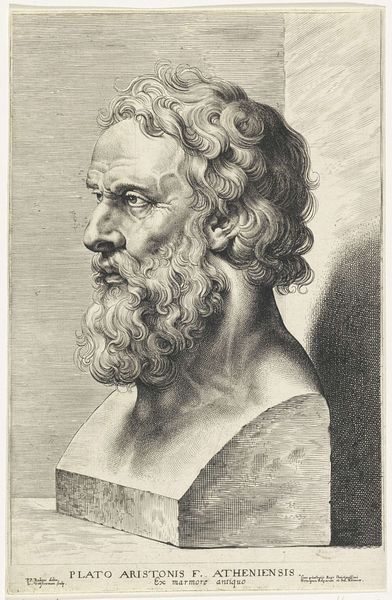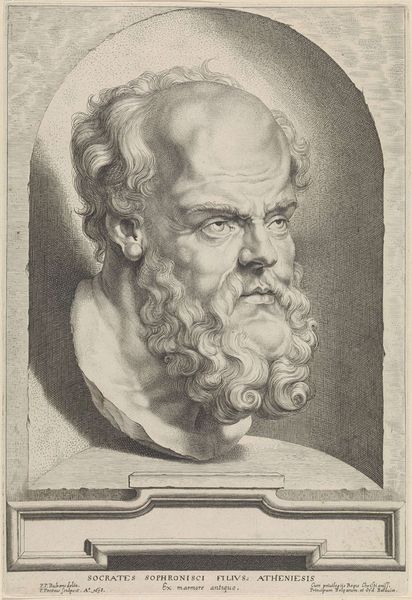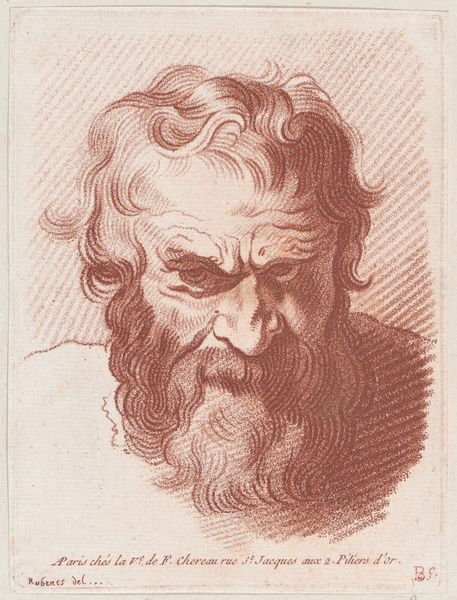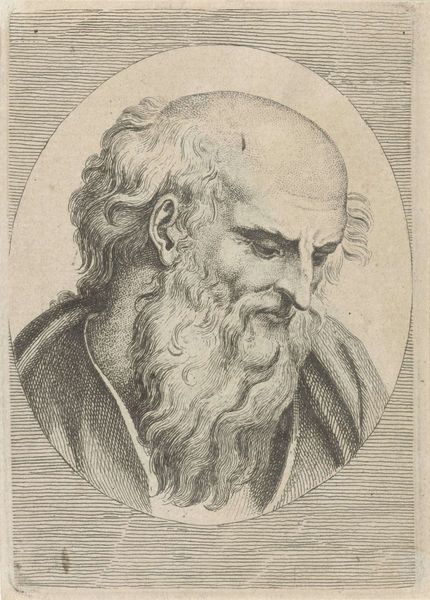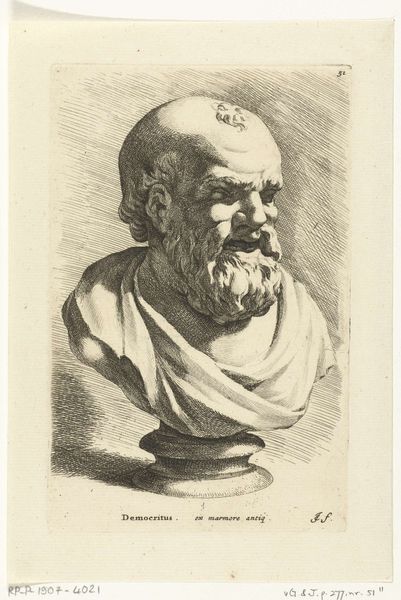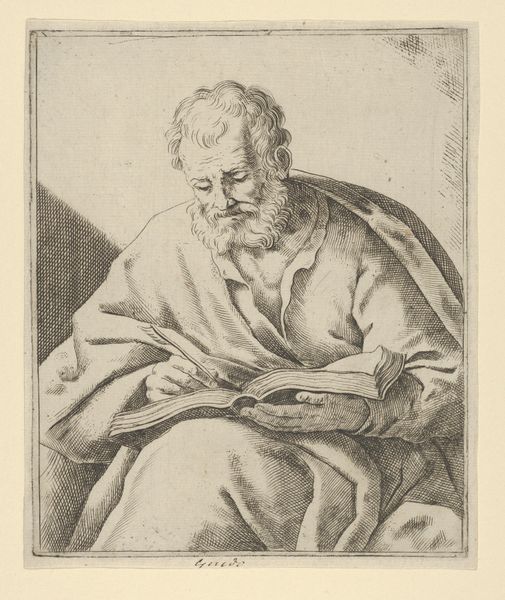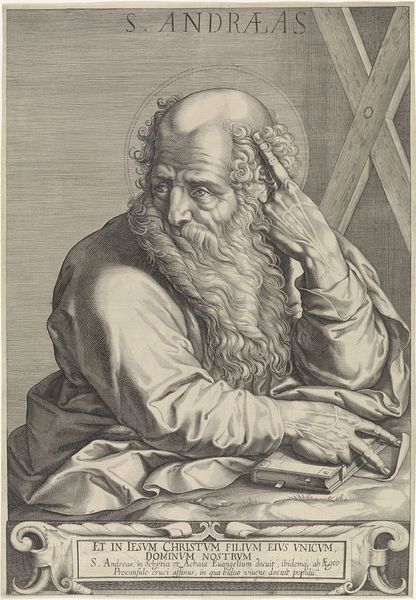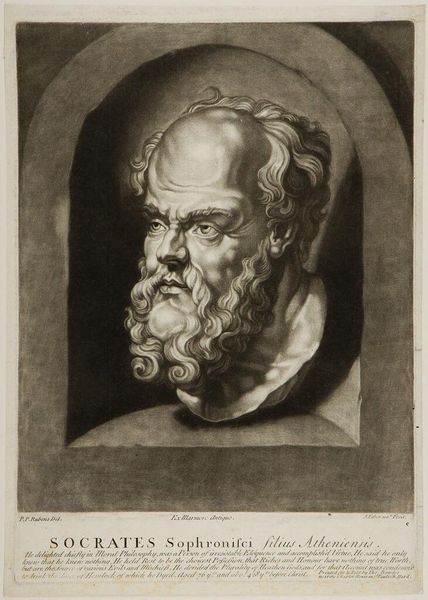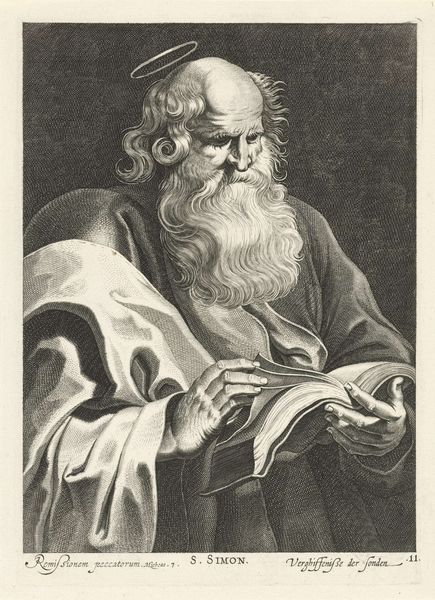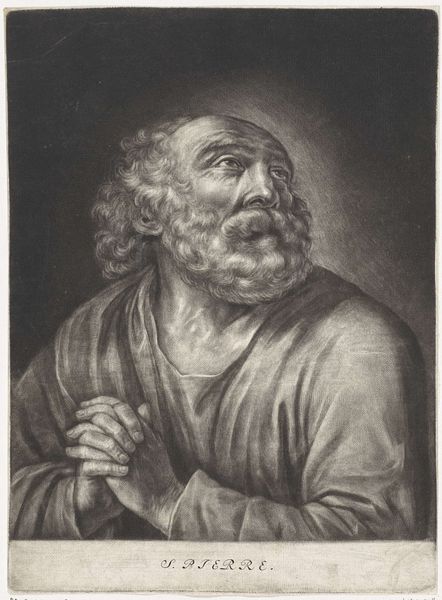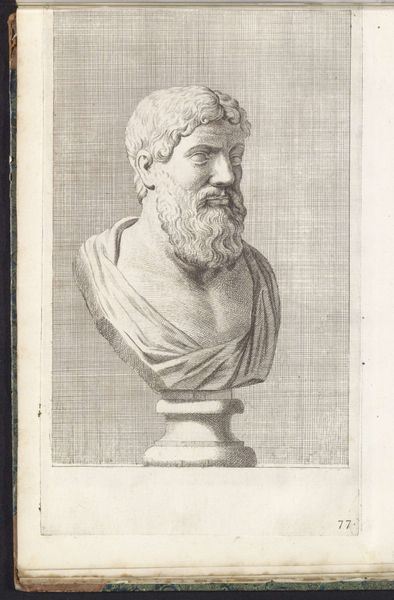
print, etching
#
portrait
#
baroque
# print
#
etching
#
history-painting
Dimensions: height 260 mm, width 210 mm
Copyright: Rijks Museum: Open Domain
Editor: This is Lucas Vorsterman I's "Bust of Democritus," an etching from between 1630 and 1638, here at the Rijksmuseum. He looks like a grumpy old man—not what I imagined a philosopher would look like! What jumps out at you when you see this? Curator: Oh, Democritus! He wasn’t just any philosopher, you know. He was known as the 'Laughing Philosopher.' Though Vorsterman certainly caught him on a bad day, didn’t he? I wonder if the sculptor (this is an etching *after* a sculpture) caught Democritus reacting to something absurd. And then Vorsterman etched *that* moment, deepening the layers of interpretation! What do you make of that almost manic energy in his expression? Editor: Manic is a great word! It’s like he’s on the verge of either a laughing fit or a shouting match. But is that the real Democritus, or the artist’s spin? I mean, Vorsterman lived so much later. Curator: Ah, there's the eternal art historical question. Think of it as a conversation across centuries. Vorsterman wasn’t just copying, he was *interpreting*. The Baroque loved drama and emotional intensity. It's a conversation between Vorsterman and Democritus - but it's also with us, isn’t it? Are *we* any closer to understanding the philosopher's mind? Or has the manic energy become an entertaining distraction? Editor: So, it's less about historical accuracy, and more about how each artist—sculptor and Vorsterman—chose to portray Democritus through their own lens? A philosophical game of telephone! I get it now. Curator: Exactly! We see echoes of Vorsterman and of his time—of ourselves and our perceptions. Maybe Democritus is laughing at *us* trying to figure him out all these centuries later.
Comments
No comments
Be the first to comment and join the conversation on the ultimate creative platform.
